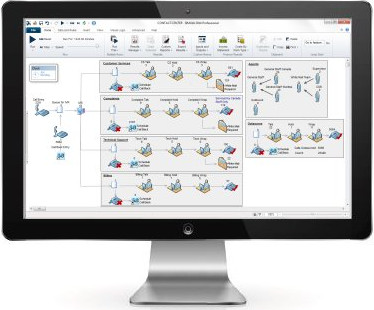
Having a consistent, asserted identity claim, ensures that call after call, time after time, you can identify a caller across different lines of business. Rather than having to answer a knowledge-based authentication question or share sensitive information over the phone to verify identity, ANI can be looked up silently in the background of the call. This data can be leveraged not only for a first-time caller but also for an identity claim for a returning caller. ANI of an incoming call can be matched with data on the file to look up a uniquely matched identity. ANI, or automatic number identification, helps to take the cognitive load off the caller by leveraging data that already comes with the call.

Leverage ANI as a factor in the ID claim. In short, passive enrollment is the optimal solution for authentication enrollment. The more seamless you can make every interaction, the better the customer experience. Its simple, passive enrollment of every caller better ensures enjoyable experiences during each call, which welcomes consumer interaction, and deepens their affinity to your brand. Passive enrollment requires no human interaction and optimizes enrollment by ensuring a seamless experience for the caller and the best return on authentication investments.Ī seamless experience is essential not only for customer experience and brand loyalty but also for the effectiveness of your authentication planning. As noted above, optimization leans towards passive solutions as they do not require consumer interaction, nor agent involvement. Enrollment processes differ but are typically categorized as either passive or active. Call center leadership looking to increase capacity, improve customer experience, reduce agent stress, and address fraud costs should seriously consider passive multi-factor authentication as a solution.Įnrollment optimization is the transformation of the processes concerning enrollment into their most efficient state for the callers and the business. The passive approach offers many benefits concerning security, operations, and customer experience. In short, multi-factor authentication, and more so passive multi-factor authentication, is a more effective and beneficial form of caller authentication. Additionally, dynamic knowledge-based authentication questions have been compromised as mega-breaches have spread addresses, phone numbers, and credit information across the dark web for years. Pindrop’s research shows that a third of the time genuine consumers cannot remember the answers to static KBAs and that more than half of the time fraudsters guess the right answer.



Dynamic knowledge-based authentication is the use of publicly available information to verify identity and the questions are updated as your public information changes.Knowledge-based authentication comes in two flavors: However, due to the answers to these questions being available publicly or leaked online – the effectiveness of this method is no longer accepted. Knowledge Based-Authentication (KBA) is the combination of real and fake-out questions that should help agents root out imposters and fraudsters.


 0 kommentar(er)
0 kommentar(er)
